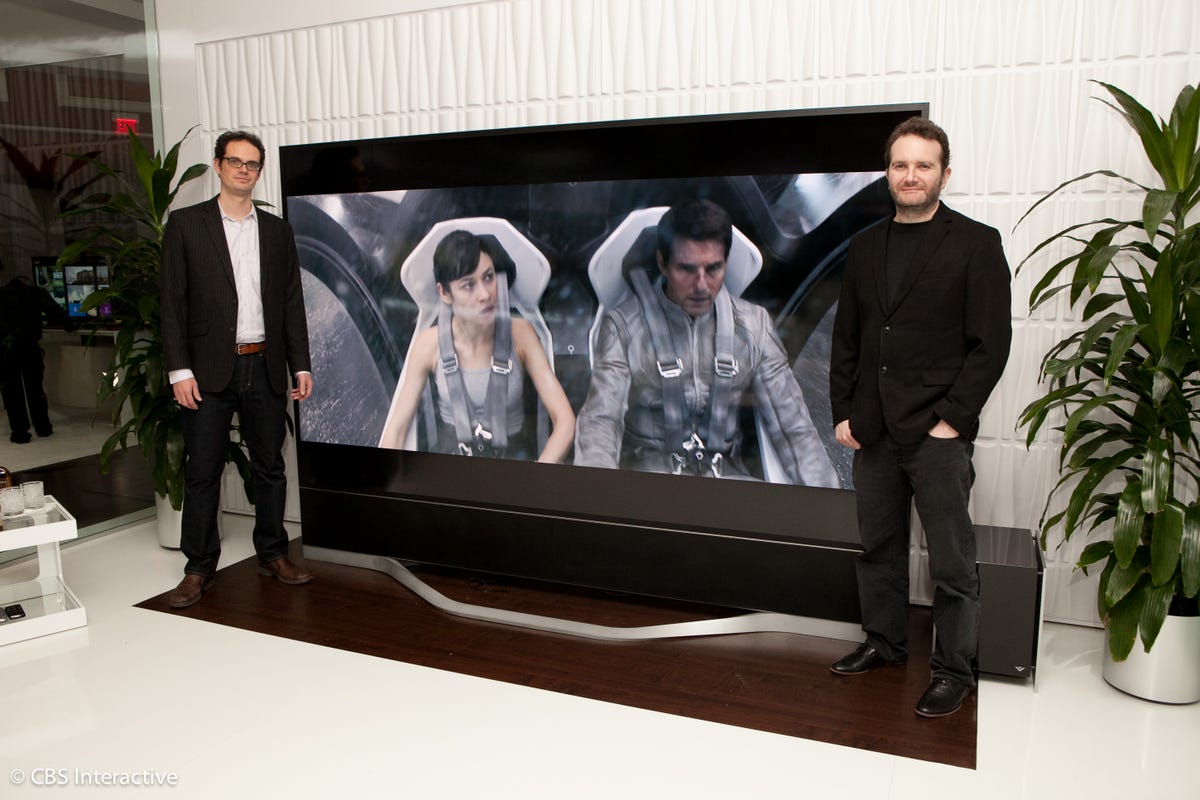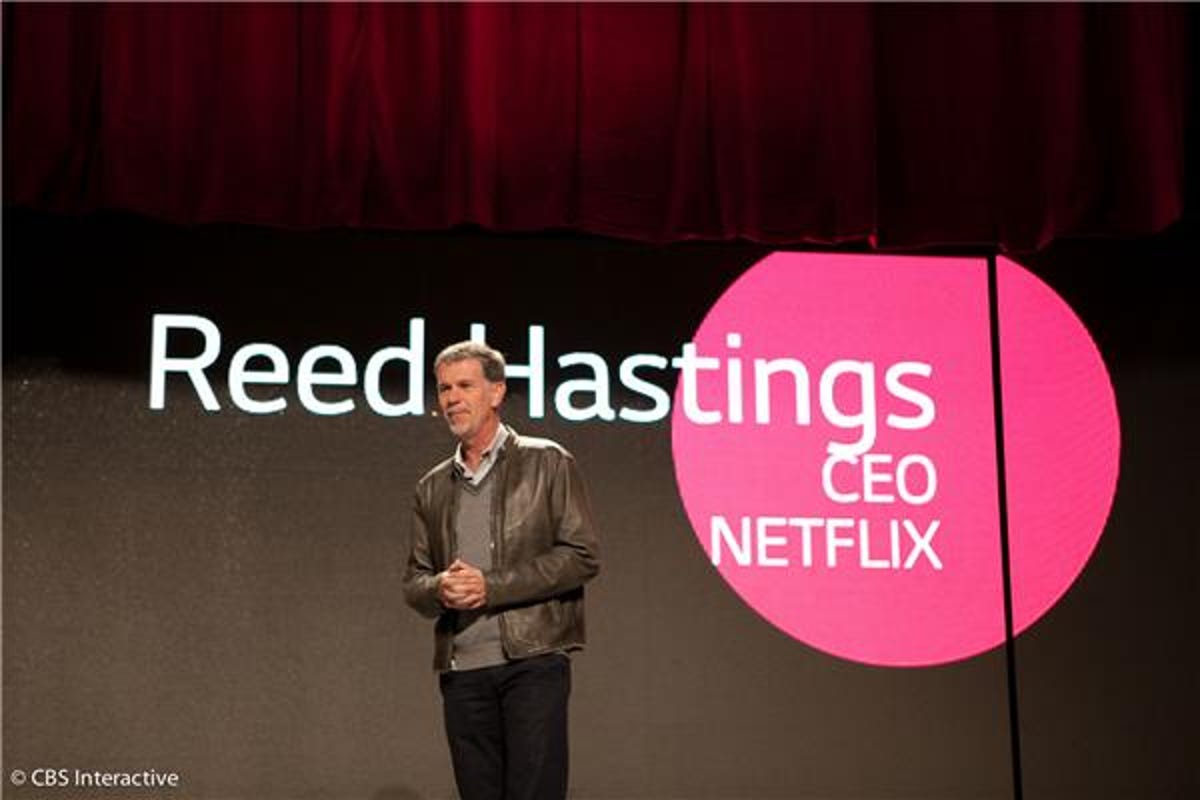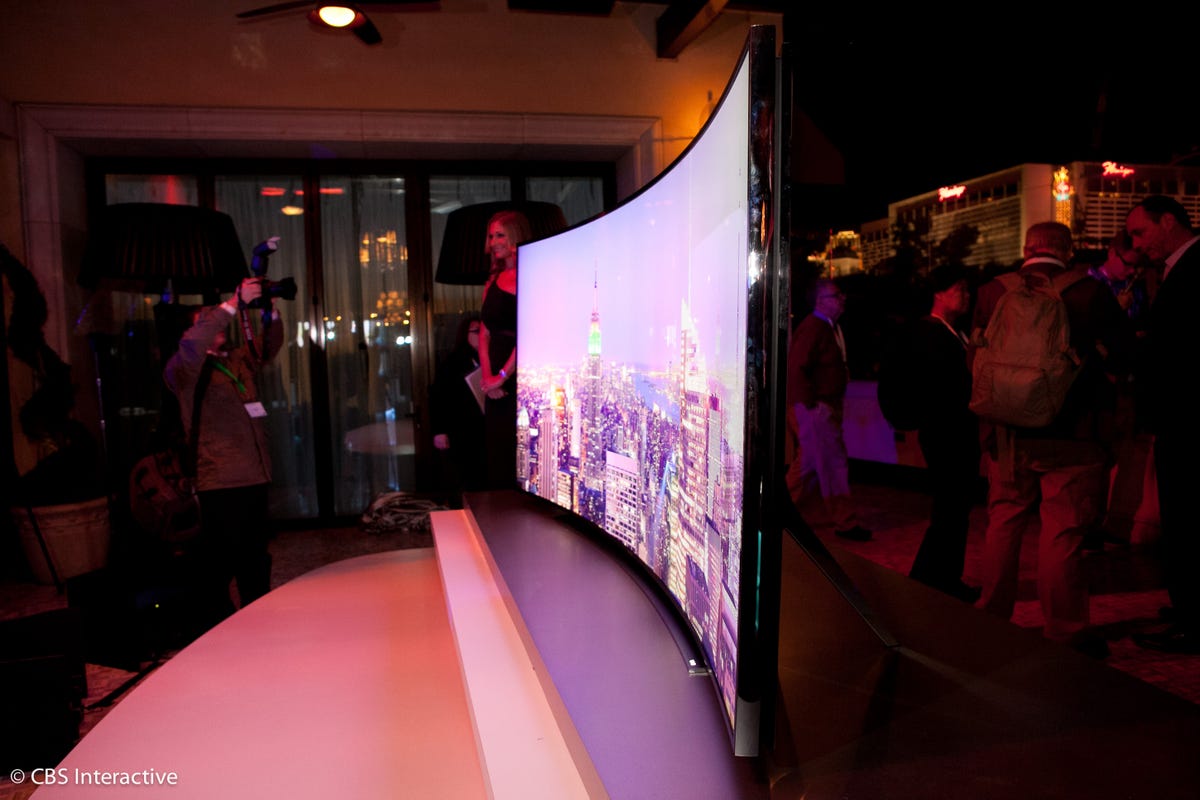

Now playing:
Watch this:
CNET’s TV reviewers talk the most notable screens of…
14:37
LAS VEGAS — Will it bend?
If the answer is “no,” then it’s probably not a TV weird enough to catch the attention of the mainstream media at CES 2014. Samsung’s brilliantly bizarre bendable TV, followed closely and predictably by LG’s, made the biggest splash by far among TV announcements at the show (except for this). The most amazing news to me is Samsung’s follow-up that it will actually be available to buy this year. It’ll probably cost six figures, but yes, it will bend.
Beyond a set with the bends, the depth of TV announcements at CES 2014 was worthy of a hyperbaric chamber. Now that the show’s wrapping up, I have some time to surface and consider the larger trends.
New televisions at CES 2014 (pictures)






Plasma’s departure leads to better LED LCD TVs
Among the flat-panel TV technologies — plasma, OLED and LED LCD — the latter dominated more than ever. LG did announce some more OLEDs, but we’ve seen most of them before, and I don’t expect any to ship in any significant quantities, or enjoy enough of a price cut to get anywhere near the mainstream this year.

LG
No plasma TV was shown at CES 2014. Samsung says it will likely debut new models later this year. I was told in a follow-up conversation with John Ryu, VP of Samsung’s Visual Display R&D office, that the lineup will encompass just a few models and, more tellingly, that he doesn’t think the technology has a long-term future at his company. He cited the difficulty of making a cost-effective 4K version–reportedly a factor in Panasonic’s pull-out — and the overall cost of production compared to LED LCD. Meanwhile the only company to announce new plasmas at the show, LG, didn’t have a single model on display at its booth.
That leaves plenty of room for LED LCD, and the models I saw at the show were more diverse than ever, and had potentially better picture quality. TV makers across the board touted local dimming models — my favorite enhancement for LED LCDs, and something I called LCD TV’s only hope (for improved picture quality) in my CES preview.
Last year, the only TV with full-array local dimming, the best kind, was Samsung’s $40,000 S9. In 2014, that list already includes Sony’s top-end XBR, Vizio’s crazy Reference Series and more affordable P series, and two series of Toshibas. For its part Panasonic showed a promising prototype full-array set said to match the picture of its vaunted plasmas.


Sarah Tew/CNET
Much like Dolby’s HDR system, officially announced at the show, many TV makers also talked about harnessing the light output potential of LED to create higher dynamic range, and introduced HDR processing to take advantage of it. I saw a promising closed-door demo by Samsung, and Vizio said its Reference Series would be the first to incorporate Dolby’s system.
As for color, Vizio touted a backlight with both white and red LEDs that allows its Reference Series to approach closer than ever to Rec 2020, something no other TV maker is claiming on a shipping set. Panasonic’s prototype is also said to approach those wider colors.
In the wake of plasma’s disappearance and the painfully slow growth of OLED, seeing high-end LCD TVs return to creating beautiful pictures should be refreshing. Now if only they can tackle blooming and off-angle issues, and do it at a price similar to those late great plasmas. Maybe next year.
4K/UHD TVs: Cheaper, Netflix streaming-ready, and “about more than resolution”
As expected 4K TVs were everywhere. The real question, as yet unanswered, is how much they’ll cost. Vizio says it will charge $1000 for its 50-inch P-series, a price that will surely make the Samsungs and Sonys of the world take heed. Sony talked up its entry-level 4K models, and LG is expected to aggressively target mass-market pricing, albeit at the expense of picture quality.


Sarah Tew/CNET
Most of the 4K sets from major makers this year will get HDMI 2.0-compatible silicon, but it’s seeming less and less likely that significant 4K content will arrive via HDMI this year. At a CES panel I attended, the speakers — including Comcast CTO Tony Werner and Sony Pictures President Chris Cookson–discussed how the initial delivery mechanism will be from a streaming service (like Netflix or Amazon Instant or Comcast’s 4K app for Samsung TVs) directly to the TV itself.
To that end, the more useful silicon is built-in HEVC/H.265 decoding, again included in most 2014 major-name 4K TVs. That’s the compression scheme of choice for Netflix as well as carriers like Comcast, and will likely be used for 4K Blu-ray — which despite some rumblings, was a no-show at CES. It looks to be a CES 2015 thing.
One other interesting discussion at the content panel — and a sentiment I heard echoed elsewhere on the floor, to my delight — was the need to focus more on the resolution-independent benefits of UHD. Those include potential for wider color gamut, faster frame rates and high dynamic range. They’ll go a lot further toward making better pictures than simply throwing more tiny, indiscernible pixels on the screen.


Sarah Tew/CNET
Curved TVs: Will Samsung’s bet pay off?
The bendable TV’s static brothers are immutably curved. Samsung announced two series this year in addition to its 105-inch monstrosity. Interestingly, no other TV maker has announced curved models yet, aside from LG with a few ultra-expensive OLEDs and its own 105-inch giant, and this 2013 Sony.
Samsung leads the TV market, by a lot, and in the past where it leads everyone else follows. But its big focus on curved this year seems like a riskier bet than the flat, thin, hairline-bezel and Smart TV Samsung bets of the past. The company cites internal studies, and dealer feedback, marked by overwhelming enthusiasm for non-flat televisions. What I’ve heard from readers, colleagues and many industry observers is “gimmick.”
My own experience with curved is limited to a few hours with Samsung’s OLED last year. I found myself wishing it was flat. On the other hand, the curve seems like something that could grow on me with repeated watching, so I look forward to testing the new sets when they arrive this year. Personally I’m not yet completely ready to dismiss such a new and radical change as a gimmick.


Now playing:
Watch this:
First Look: Roku TV
1:32
Smart TV gets simpler
One of our favorite TV introductions comes came from Roku by way of China. TCL and Hisense will ship Roku TVs later this year, promising a value-first, simpler-to-use alternative to the elaborate Smart TV suites used by the majors.
LG’s WebOS interface also purports to simplify the Smart TV experience, relying on the reputation for the eponymous Smartphone platform’s excellent interface design. We’ve long been fans of LG’s motion remote–newly aped in 2014 by Samsung — so hopefully the refresh goes a step away from easing clutter and Netflix and other popular apps as accessible as Roku.
Out with the old, in with the…less old
Aside from questionable advances like curved and bendy, the TVs of CES 2014 didn’t reinvent the wheel. Screen sizes are larger across the board, and the need to carry both 4K and 1080p lines diversifies many TV makers’ offerings. Panasonic dropping plasma and Samsung nearly doing the same thing bums out picture qualify aficionados like us, but on the other hand we’re encouraged by local dimming 2.0.
It should be another fun year of TV reviews, and we’re looking forward to sharing it with you. The TVs might bend, but our commitment to reviews integrity does not.




